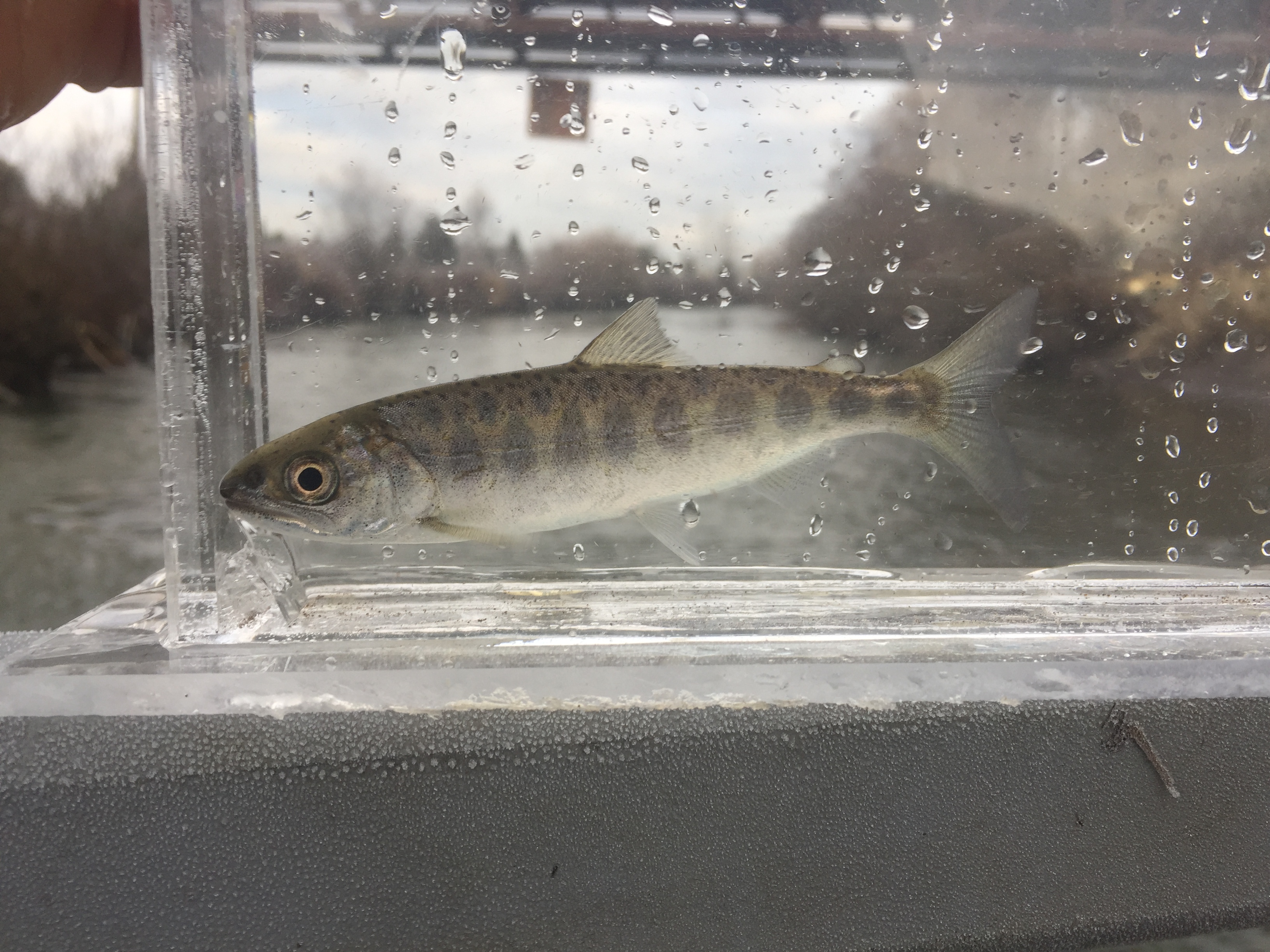
Juvenile Research
Juvenile Salmonid Production Assessment Project
The Puyallup Tribe Fisheries Department began long term monitoring of juvenile salmon on the Puyallup River in 2000, and the White River in 2016. Juvenile salmon migrate from the freshwater to marine waters from late winter to mid-summer. The primary objectives of this study are to estimate the abundance of natural-origin Chinook salmon and evaluate other characteristics. In addition, other species of salmon, Steelhead, Coho, Chum, Pink and Bull Trout, are also monitored. Depending on river conditions, the traps are generally operated on a continuous basis from February through August.

Monitoring of smolts on the Puyallup River began in 2000

Monitoring of smolts on the White River began in 2016
The Puyallup River is located in mid-central Puget Sound, Washington, and enters into Commencement Bay. The Puyallup River Watershed encompasses 438 square miles and includes three major tributaries: the Carbon River, Mowich River and South Prairie Creek. The Puyallup, Carbon and Mowich Rivers originate from glaciers located in Mt. Rainer National Park and exhibit the classic features of glacial streams: frequently shifting braided channels, high turbidity and low temperatures.
Prior to the construction of the Electron Diversion Dam in 1904, natural production occurred throughout the entire Puyallup River Basin. However, the dam eliminated access to 21.5 miles of spawning habitat. In the fall of 2000, the Puyallup Tribe reopened this habitat for fish use by installing a fish ladder at the Electron Dam.
The White River is located in Pierce County, Washington and is a tributary to the Puyallup River. The White and West Fork of the White River, the two primary rivers which contribute flow, originate from glaciers located in Mt. Rainer National Park and exhibit the classic features of glacial streams: frequently shifting braided channels, high turbidity and low temperatures.
Unlike the Puyallup River, the White River is managed for flood control by the U.S. Army Corps of Engineers. In 1947, the Corps built an earthen dam at river mile 29.6 and then followed up with construction of fishway facilities five miles below the dam at river mile 24.3 in 1949. Because the earthen dam, Mud Mountain Dam is impassible to fish.
Location of rotary screw traps in the Puyallup/White Rivers.
An eight-foot rotary screw trap is used to capture juvenile salmon during their annual migration. The passive trapping mechanism utilized on both traps is eight feet in diameter and mounted between two floating pontoons. Once placed in the river, the trap remains stationary for the season.
Fish are captured when they enter the trap and remain in the live box until the trap is checked. When the trap is checked, individuals are identified, counted and sampled, then released back to the river to continue their journey. Data collected is used to monitor the health and recovery of salmon in the Puyallup River watershed.

The Juvenile Salmonid Production Assessment Project is made possible by funding from King County, the Salmon Recovery Funding Board, and the Puyallup Tribe of Indians. Thank you to our partners at the Muckleshoot Indian Tribe, the Washington Department of Fish and Wildlife, and the Cities of Puyallup and Sumner.
For more information, contact Puyallup Tribe Fisheries at 253-680-5560.
